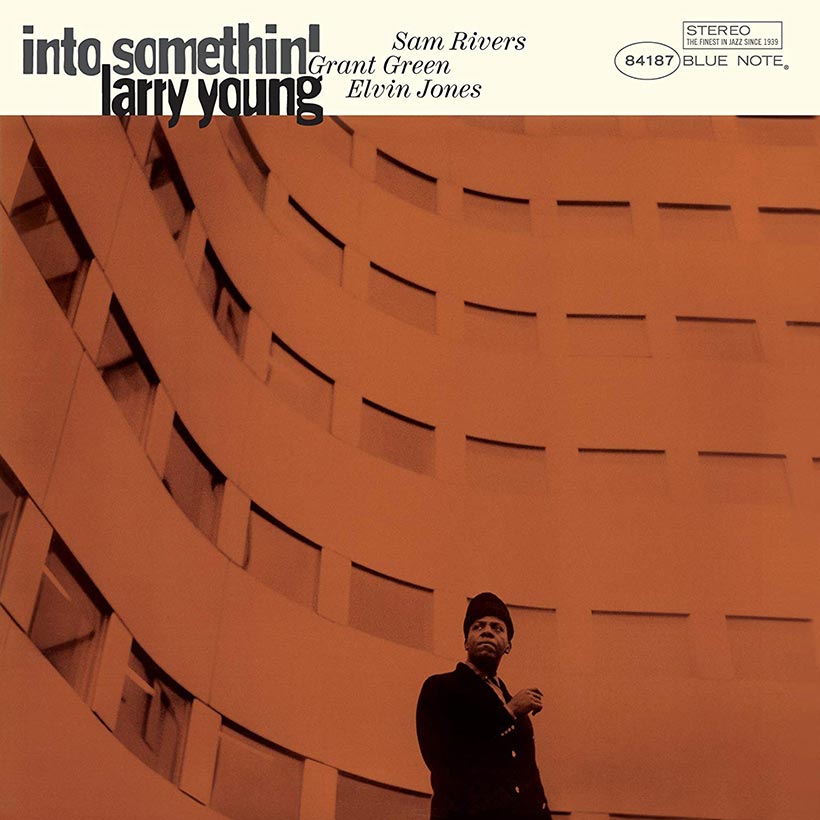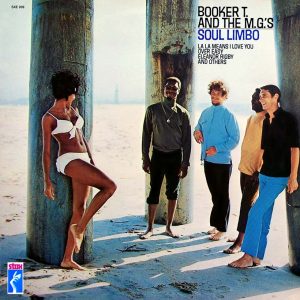Larry Young may have started out as a soul jazz organist in the mold of such redoubtable Hammond heroes as Jimmy Smith, but when, in late 1964, he arrived as a 24-year-old newbie at Blue Note Records, it was apparent that he had undergone a radical metamorphosis. While his three early albums for jazz indie label Prestige, and its subsidiary imprint, New Jazz, were a solid but unspectacular synthesis of hard bop and R&B, Into Somethin’ marked a notable transformation in Young’s musical conception.
The context of Into Somethin’
This change of direction was a result of Young, who hailed from Newark, New Jersey, beginning to fall under the spell of a certain trailblazing tenor saxophonist. His name was John Coltrane and, in late 1964, Trane was fully immersed in his modal period, which would culminate in the iconic album A Love Supreme, recorded in December of that year.
Listen to Into Somethin’ on Apple Music and Spotify.
A month before that momentous session, on Thursday, November 12, 1964, Young persuaded Coltrane’s drummer, the mighty Elvin Jones, then 37 and renowned for his blend of power and finesse, to join him in the studio. Alongside them were Blue Note’s leading guitarist, Grant Green, who had hired Young to play on his album Talkin’ About!, recorded two months earlier, and Oklahoma-born tenor saxophonist Sam Rivers, who had just finished a short stint in the Miles Davis Quintet (he was replaced by Wayne Shorter).
The album itself
“Tyrone” is the first of four Young compositions on the five-track Into Somethin’; it’s a long, midtempo tune in 6/8 time that is characterized by a fairly laid-back groove. The piece begins with a unison statement of the main theme on sax and organ before Young breaks off to play a solo that gradually builds in intensity. Grant Green follows, displaying his penchant for picking out horn-like melodic lines, while Young, with exquisite soft comping, together with Jones’ flowing polyrhythms, keeps the groove churning. Then Sam Rivers wades in with a cyclone of saxophone notes that gives the tune a more exploratory, Coltrane-esque edge before a reprise of the opening theme. The song’s title was apparently the nickname that the organist bestowed on his then five-year-old son, Larry Young III.
“Plaza De Toros” – written by Grant Green – boasts a strong Hispanic influence. Taken at a brisk pace, with Elvin Jones impressing on drums, it’s Into Somethin’’s most overtly modal piece, built on the simple alternation of two chords a semi-tone apart, which allows the soloists more freedom and space for their improvisations. Green takes the first solo, followed by a fairly wild, avant-garde-tinged one by Rivers, and then Young, approaching the organ as if playing piano, brings a sense of calm before ratcheting up the emotional tension.
“Paris Eyes” is a blithe swinger written by Young in anticipation of a trip to join saxophonist Nathan Davis’ group in the capital of France, which he would do a few weeks after the Into Somethin’ session. Though it’s a mellow piece, Young’s fast-walking pedaled bassline and Jones’ drums provide an insistent rhythmic impetus that ensures the track never becomes soporific. The solos – from Rivers, who almost sounds lyrical, Green, and Young – are all exquisite and in keeping with the mood of the piece.
“Backup” has more of a blues-tinged undertow, with Young’s walking bass helping to cook up a simmering after-hours groove. The organist takes the initial solo and reveals that, despite the song’s conventional blues setting, his expanded musical vocabulary distinguished him from the soul-jazz school of organists. Grant Green is the epitome of cool with his languid but deft solo, while Sam Rivers, never one for being complacent or taking an easy option, imbues the tune with an exploratory cutting edge.
Closing Into Somethin’ on a mellow high is “Ritha,” a musical epitaph to the woman who bore Young’s son, Tyrone, but who had passed away earlier in 1964. Instead of composing something mournful, Young came up with a wistful piece that has glints of gaiety in its DNA. The song is also notable for the absence of Sam Rivers, who drops out to allow Young to feature in a trio setting, then a popular format for jazz organists.
What came after Into Somethin’
By the time Into Somethin’ came out, in March 1965, Larry Young was working in France. The album’s striking cover photo – depicting Young in a fur hat standing against imposing Brutalist-style architecture – was taken by Francis Wolff during the organist’s time in Paris. When he returned to the US, Young was more deeply into modal jazz and, later the same year, recorded Unity, his most famous LP, for Blue Note. He remained with the label until 1969, by which time he was branching out into jazz-rock and fusion. Young played on Miles Davis’ Bitches Brew LP and then joined Tony Williams’ Lifetime trio with John McLaughlin. He also played with Jimi Hendrix, but that’s another story for another time.
Often overlooked in Young’s discography, the organist’s Blue Note debut was a significant release and showed that he was really onto something. It was his first step in freeing the Hammond organ from a jaded rhythm’n’blues context and reframing it to reflect a new way of thinking within the jazz world. The freshness and innovation of this approach would soon lead to The Duke Of Newark – as he was nicknamed – being hailed as the Coltrane of the organ.




